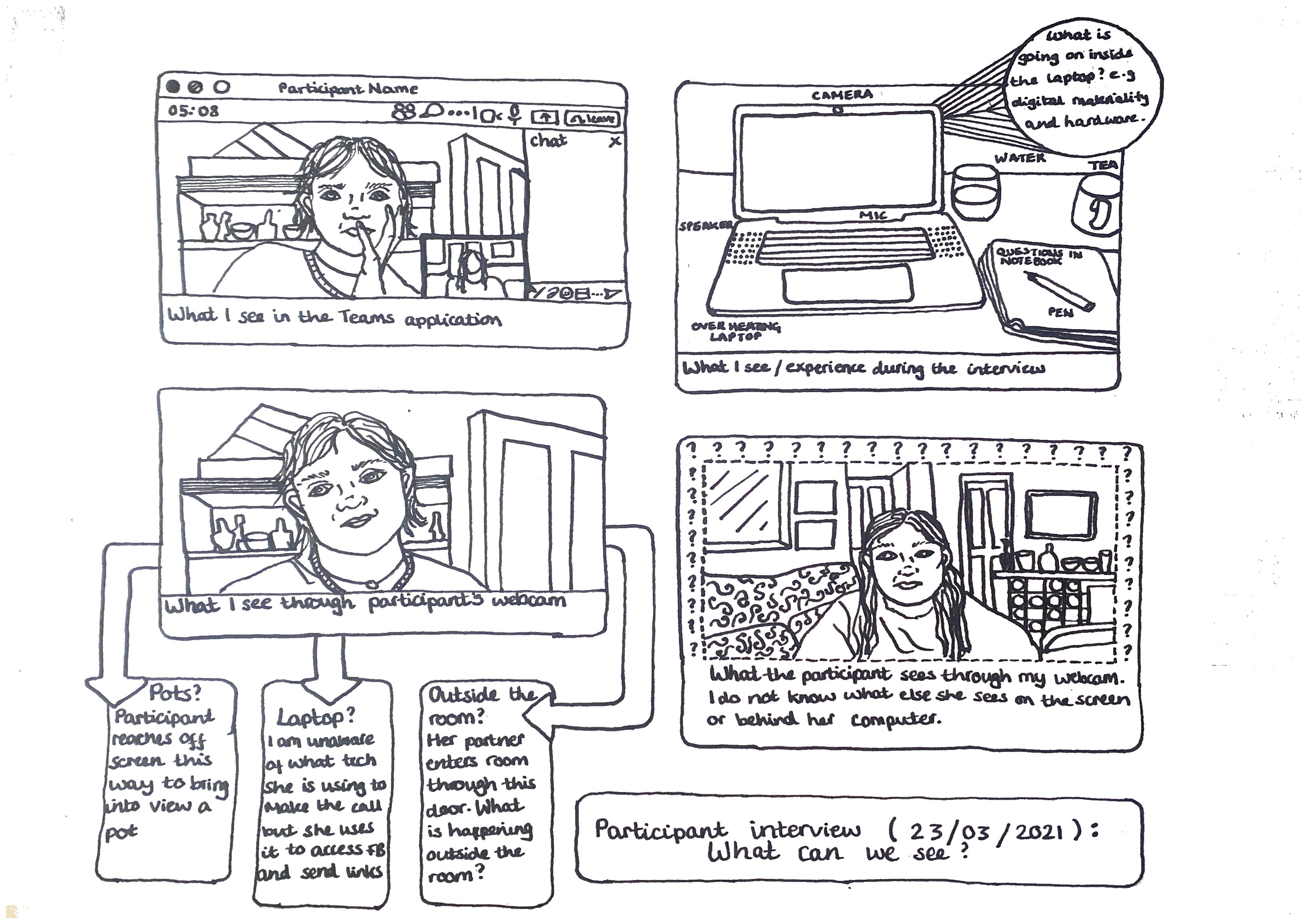Can making pottery impact your wellbeing?
Can making pottery impact your wellbeing?

Catherine O’Brien is a DPhil Archaeology student at the University of Oxford studying pottery skill development and its wellbeing impacts during the Covid-19 pandemic in Britain. Particularly, she is interested in how people used social media and digital tools to help them learn and form connections with other potters when access to studios and workshops was limited by the pandemic.
Her research draws on the cognitive and anthropological archaeologist Professor Lambros Malafouris’ Material Engagement Theory (MET), which argues that cognition and thinking are not confined solely to the brain but are processes that occur in our engagements with the world in which we live. From this perspective, skill, knowledge, and emotion are extended into the world surrounding us through our interactions with and in it, and thus we can ask: can making pottery impact your wellbeing?
What is wellbeing?
We can broadly understand wellbeing as being categorised as either ‘objective wellbeing’, which is related to material and social circumstances, or ‘subjective wellbeing’ which is based on individual self-assessment. Subjective wellbeing is further divided into ‘hedonic wellbeing’ which is concerned with happiness, positive emotion and little pain, and ‘eudemonic wellbeing’, which implies fulfilment and the realisation of potential, or flourishing. Engaging in the making of pottery can impact both these forms of subjective wellbeing.
The hedonic wellbeing impacts of pottery
Through sensuous and unmediated engagements with clay, its malleability or resistance, roughness or smoothness, coolness or warmth, and its earthy tangibility, come to the fore and make us feel in certain ways. These properties of clay have been utilised in art therapy, where they argue working with clay, through bodily engagements with it, facilitates the expression of feelings.
For example, throwing clay on a wheel can feel meditative and peaceful, with the smooth wet clay spinning beneath the hand as potter, wheel, and clay, collaborate together in the making of the vessel. It’s earthy and dirty qualities might also encourage a loosening of a sense of control in the maker, relaxing them, and re-connecting person to the world. At other times it can be stressful or frustrating, particularly for novices, who through perhaps exerting uneven pressure across their two hands set the clay off centre, collapsing the piece. Moreover, the complexities of the art of ceramics mean that pieces can be lost at almost any stage in production, for example they may explode during firing if air bubbles remain in the clay. Learning how to make pottery is a technical skill that also requires developing emotional resilience to such losses which is a learning process in itself.
The Eudemonic wellbeing impacts of pottery
Clay retains markers of movements of the human actions that collaborate with it in the production of forms, as well as in the remnants of fingerprints or nail scratches upon its surface. Marked by touch and traces of the hand, the handmade lend themselves to a sense of authenticity in a world of mass-produced products. Such a view was drawn upon by the Arts and Crafts Movement of the mid-nineteenth and early twentieth century associated with Ruskin’s critique of mechanical industrialisation in England and was led by advocates such as William Morris. Morris argued that craft, in opposition to the rigorous perfection of the machine made, thus becomes emblematic of human individualism. Moreover, Morris viewed craftwork as a social critique that could impede the degradation of factory labour and offer individuals the ability to find pleasure in their work. Such notions are echoed today in writings on craftworking, which discusses it as an empowering enaction of social agency that creates pride in one’s labours, capabilities and achievements.
However, more than aiding in constructing personal identity, crafting develops a sense of belonging and common identity through participating in craftworking communities. Being a craftsperson is defined in relation to participation in the wider community and history of the craft through the learning of traditional skills or exchange of ideas, and it is well documented that craft has an important role in promoting wellbeing through social interactions amongst people otherwise excluded from social networks.
My research is with potters during the Covid-19 pandemic, when access to physical spaces such as studios, workshops, or craft fairs, where we typically understand craftspeople to convene and share ideas and practices, was limited. In this context, potters turned to social media to share images of their work, learn new skills, and construct shared narratives and their identities as potters. In this way, for the potters with which I work, their social media presence and interactions offered them ways of connecting and sharing, and such media are embedded in their overall experience and enjoyment of pottery, and thus its wellbeing impacts. While it is certainly true social media may also contribute negatively to one's wellbeing, there are benefits to the ways it allows us to construct communities and participate in shared practices during times of physical distancing.

Cathy's illustration of her view of participant interviews during lockdown. Image Credit: Catherine O'Brien.



